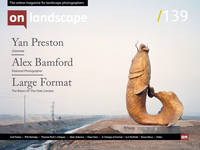My first steps into the world of Medium Format Film Photography

Dave Varo
Dave Varo is an amateur landscape photographer usually to be found in the Peak District, or Lake District, or his native Yorkshire. Recently, his work has moved towards a more documentary style, exploring ways in which photography can be used to record changes brought about by human occupation, and in some cases, exploitation of the countryside.
Apparently, film photography is making a comeback. Actually, it never went away, but in the same way that vinyl record sales are booming again, there is definitely a resurgent interest in film photography, as is illustrated by Kodak’s announcement in January 2017 that they are going to start making Ektachrome colour film again.
Like many others, I have recently taken the step, or is it a leap, into the world of medium format film photography. This article will explore three main themes, namely why I did it, how I did it and what I’ve learnt so far. To call my transition into film photography a step oversimplifies things. I like to think of it as more of a journey, and like many journeys, there have been a few detours along the way, and more than a few wrong turnings.
I’m going to start with a confession. This isn’t the first time I’ve been a film photographer. One of my very first cameras over 40 years ago, was an Ensign Selfix 820 folding camera, on which I used to take black and white photographs, which I developed and printed in the bedroom of the family home. Since those days, I’ve progressed via 35mm into digital, majoring for most of the time in landscape work, even though for many of the intervening years I may not have realised it.
So why did I move?
If that’s the right word, into the world of medium format film photography? After all, over the years I had amassed a couple of DSLRs and a selection of lenses which were perfectly capable of making decent images. Indeed, I once recall saying to a workshop leader that I wouldn’t be changing my kit until it was holding the quality of the images back rather than me.
I’ve found it very hard to rationalise this decision both to non-photographers and to some more experienced ones. In fact, I sometimes find it hard to rationalise to myself. Hopefully, the following words will rectify that.
There are actually a few reasons, but I think they can be summed up under one main heading, and that is Quality.
What first sowed the seed in my mind of moving into medium format was looking at published works, particularly in print. I realised that a lot of the images that made an impression on me had a common factor in that they were made on film, rather than digitally. Now that isn’t to say that there isn’t a lot of digital work out there that I like because there is, but the film work seemed to have a certain ethereal quality to me.

